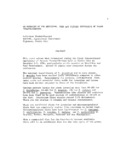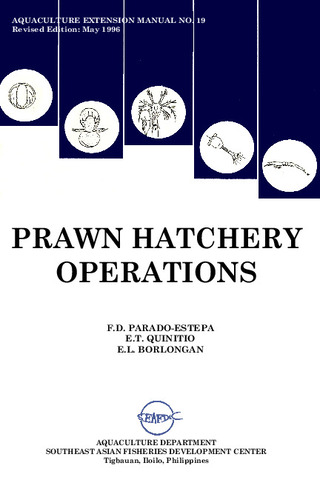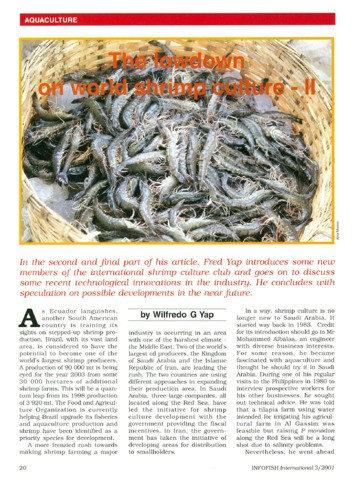Occurrence and pathology of Penaeus monodon baculovirus infection in hatcheries and ponds in the Philippines
Share
Abstract
Samples from Penaeus monodon hatcheries (2-3 day old larvae or Zoea 1 to 34 day old post larvae or PL34) and ponds (15 to 159 days old in the pond) were histologically examined for the presence of eosinophilic occlusion bodies in hypertrophied nuclei of the hepatopancreas which is indicative of P. monodon baculovirus infection. The earliest stage found infected in the hatcheries was PL3. Infected shrimp from ponds had slow growth rates and generally pale yellow to reddish brown hepatopancreata. The infection was also characterized by the necrosis and degeneration of the hepatopancreatic tubules with secondary bacterial invasion.
Suggested Citation
Baticados, M. C. L., Pitogo, C. L., Paner, M. G., de la Peña, L. D., & Tendencia, E. (1991). Occurrence and pathology of Penaeus monodon baculovirus infection in hatcheries and ponds in the Philippines. The Israeli Journal of Aquaculture-Bamidgeh , 43(1), 35-41. http://hdl.handle.net/10862/1229
Subject
Taxonomic term
Collections
- AQD Journal Articles [1248]
Related items
Showing items related by title, author, creator and subject.
-
An overview of the nutrition, feed and feeding techniques of prawn penaeid/shrimps
Piedad-Pascual, Felicitas (Philippine Council for Aquatic and Marine Research and Development, 1989)This paper echoes what transpired during the first International Conference of Penaeid Prawns/Shrimps held in Iloilo City in December 4-7, 1984, particularly on the Nutrition nd Feed Development. Around 25 papers were ... -
Prawn hatchery operations
Parado-Estepa, Fe D.; Quinitio, Emilia T.; Borlongan, Emeterio L. (Aquaculture Department, Southeast Asian Fisheries Development Center, 1996-05)The manual, an updated version of the 1984 SEAFDEC/AQD manual, presents the underlying principles and step-by-step instructions of prawn larval and post-larval rearing. The techniques described are not only applicable to ... -
The lowdown on world shrimp culture - II
Yap, Wilfredo G. (INFOFISH, 2001)This paper introduces some new members of the international shrimp culture club and goes on to discuss some recent technological innovations in the industry, particularly the polyculture of tilapia (mainly Oreochromis ...




